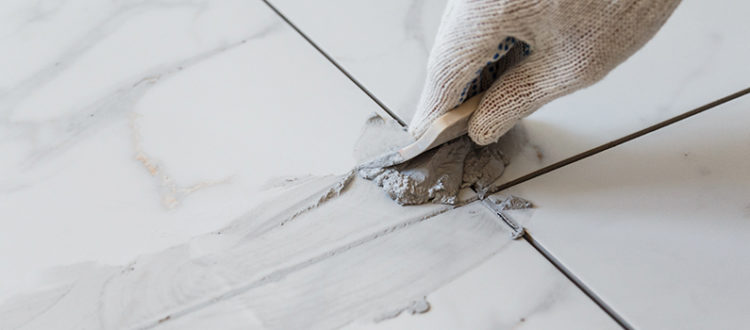What Is the Purpose of Tile Grout?
What Is the Purpose of Tile Grout?
Tile grout is a building tool available in quite a few varieties, each of which comes in different colors. Grout fills in the spaces between tiles. It is essential for creating a seamless tile appearance, as well as protecting both your tiles and the surfaces underneath. It prevents moisture from seeping into the substrate, straightens tile lines, and keeps tiles from cracking or rubbing against each other.
What Is Tile Grout?
Not quite sure what tile grout it? You’re likely more familiar with it than you think! Grout is filler for the joints between tiles once the tile has been set on a wall, floor, or other surfaces. It’s typically a powdered mix of cement, limestone, and color pigment (sometimes with sand added). Once mixed with water, the mixture is applied to the tile and left to harden.
What Does Tile Grout Do?
Tile grout plays an important role. From an aesthetic perspective, grout gives a wall, floor, or any tiled surface a really clean appearance. It keeps dirt and debris from getting in between or even under the tile. It even adds rigidity and strength to the tile installation!
Types of Tile Grout
Grout comes in a few varieties, each with its own benefits. Here are the most popular versions.
Epoxy Grout
Epoxy grout is very different from the cement grouts listed below. Epoxy grout doesn’t need to ever be sealed, as it’s not porous. It appears soft and smooth and has some give if you push on it. You’ve likely seen it along countertops, pool decks, waterline pool tiles, and even outdoor patios. Epoxy grout is especially beneficial for those who live in areas that frequently experience earthquakes, as it’s more flexible and likely to move with shifts in your walls and tile. The only downside to epoxy grout is that it is more expensive, and harder to install due to its shorter “open time” — the amount of time you have before it becomes too solid to work with.
Sanded Grout
Sanded grout is a form of grout that is good for large grout joints; a general rule of thumb is any grout space that is larger than ⅛”. The sand in grout helps grout stay in between the joints. Portland-based cement grout is the most common type and sanded grout comes in both dry and pre-mixed forms. Sanded grout is very versatile, and can be used in virtually any project whether inside or outside. Sanded grout does need to be sealed in order to properly protect against dirt, spills, and discoloration. As stone experts, we must note that sanded grout cannot be used with certain stone materials, namely marble, as the sand can scratch your stone.
Unsanded Grout
Unsanded grout is like sanded grout but made without sand. For smaller grout joints under ⅛”, use unsanded grout. You can’t use sanded grout in small joints because not enough grout will make up the space, instead being filled with too much sand. This can lead to instability. Unsanded grout is stickier than sanded grout — perfect for those smaller grout spaces. Like sanded grout, unsanded grout does need to be sealed to protect against damage caused by stains, spills, and even UV lighting.
Do I Need Tile Grout?
Technically speaking, grout isn’t necessary. For dry spaces with less than 0.0025” of space between tiles, you could get away without it. However, any job done without grout isn’t likely to last. Grout application may be tedious, but it protects against cracking, uneven tiling, and the collection of debris between tiles.
Your Next Tile Project
If you’re thinking of adding natural stone tiles to your home, contact Impression today! Our team of stone experts and artisans crafts unique custom home features out of marble, limestone, reclaimed terracotta, and more! No matter what your dream home looks like, we’ve got the materials to match. Get in touch today to be walked through the home feature creation process, and learn more about how grout can improve your new tiles.
















